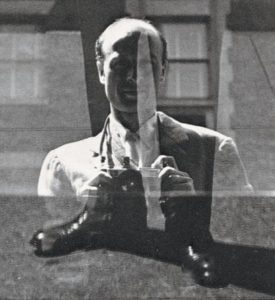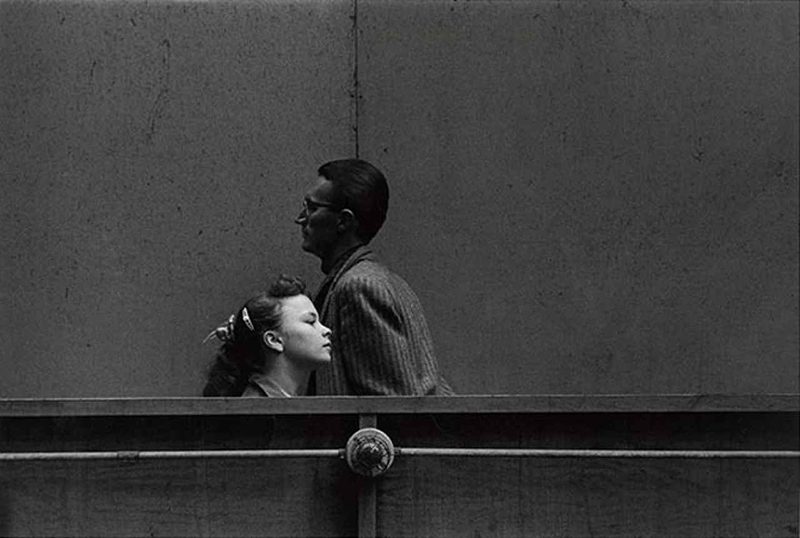PHOTO:Harry Morey Callahan
 Harry Morey Callahan (22/10/12-15/3/99) was one of the most influential photographers of the 20th Century and is best known for utilizing the objectivity of straight photography to produce works that reinvented reality. A master of modernist experimentation, Callahan explored a range of subjects, from landscapes to city streets to portraits of his wife—and techniques throughout his career.
Harry Morey Callahan (22/10/12-15/3/99) was one of the most influential photographers of the 20th Century and is best known for utilizing the objectivity of straight photography to produce works that reinvented reality. A master of modernist experimentation, Callahan explored a range of subjects, from landscapes to city streets to portraits of his wife—and techniques throughout his career.
By Dimitris Lempesis
 Harry Morey Callahan never completed college or studied photography in the classroom. In 1938, he was working at the Chrysler Company in Detroit, Michigan, joined the Chrysler Photo Club, and learned camera basics from a friend. He soon became dissatisfied with hobby photography and the sentimental pictorialism that club members favored. Wanting something more, he found it late in 1941 when the photographer Ansel Adams lectured at the club and as Callahan later told “He set me free”. Adams’ pictures demonstrated how clear, sharp, highly detailed descriptions of the visible world could be expressive. In the summer of 1942, Callahan traveled to New York to meet Stieglitz, but was too intimidated to show his photographs. He admired Stieglitz’s series of portraits of Georgia O’Keeffe, which inspired him to begin the decades-long series of portraits of his wife Eleanor. Around this time, Callahan befriended Detroit-area photographer, Arthur Siegel, who was a practicing photojournalist. Siegel had studied with László Moholy-Nagy, who founded the New Bauhaus school in Chicago. Through informal gatherings at Siegel’s house, he became acquainted with Moholy-Nagy’s Bauhaus teachings. Within two years of meeting Adams, Callahan developed the themes and techniques that would characterize his 50-year career. He experimented with modernist ideas derived from Bauhaus teachings. He experimented with cameras in a range of sizes, from 35 mm to 8 x 10 inch formats, and made multiple exposures, high-contrast prints and used both black and white and color film. Yet, he also he imbued his straight photographs of the every-day world with personal expression. Callahan explored a range of subjects: landscapes and city streets as well as portraits of his wife Eleanor and daughter Barbara. In 1961, he began to teach at the Rhode Island School of Design, retiring in 1977. From the late 1940s to early 1960s, Callahan’s central model and muse was his wife Eleanor Callahan, and after her birth in 1950, his daughter Barbara. By the 1970s, he had begun to focus on color photography. He had made color photographs for several years, he did not print his colour slides until 1978, when he became the first photographer chosen to represent the United States at the Venice Biennale. By 1980 he was using colour almost exclusively. The Museum of Modern Art in New York City presented a major retrospective exhibition of his work in 1976. In 1983, the Callahans moved to Atlanta where Harry developed his Peachtree series.
Harry Morey Callahan never completed college or studied photography in the classroom. In 1938, he was working at the Chrysler Company in Detroit, Michigan, joined the Chrysler Photo Club, and learned camera basics from a friend. He soon became dissatisfied with hobby photography and the sentimental pictorialism that club members favored. Wanting something more, he found it late in 1941 when the photographer Ansel Adams lectured at the club and as Callahan later told “He set me free”. Adams’ pictures demonstrated how clear, sharp, highly detailed descriptions of the visible world could be expressive. In the summer of 1942, Callahan traveled to New York to meet Stieglitz, but was too intimidated to show his photographs. He admired Stieglitz’s series of portraits of Georgia O’Keeffe, which inspired him to begin the decades-long series of portraits of his wife Eleanor. Around this time, Callahan befriended Detroit-area photographer, Arthur Siegel, who was a practicing photojournalist. Siegel had studied with László Moholy-Nagy, who founded the New Bauhaus school in Chicago. Through informal gatherings at Siegel’s house, he became acquainted with Moholy-Nagy’s Bauhaus teachings. Within two years of meeting Adams, Callahan developed the themes and techniques that would characterize his 50-year career. He experimented with modernist ideas derived from Bauhaus teachings. He experimented with cameras in a range of sizes, from 35 mm to 8 x 10 inch formats, and made multiple exposures, high-contrast prints and used both black and white and color film. Yet, he also he imbued his straight photographs of the every-day world with personal expression. Callahan explored a range of subjects: landscapes and city streets as well as portraits of his wife Eleanor and daughter Barbara. In 1961, he began to teach at the Rhode Island School of Design, retiring in 1977. From the late 1940s to early 1960s, Callahan’s central model and muse was his wife Eleanor Callahan, and after her birth in 1950, his daughter Barbara. By the 1970s, he had begun to focus on color photography. He had made color photographs for several years, he did not print his colour slides until 1978, when he became the first photographer chosen to represent the United States at the Venice Biennale. By 1980 he was using colour almost exclusively. The Museum of Modern Art in New York City presented a major retrospective exhibition of his work in 1976. In 1983, the Callahans moved to Atlanta where Harry developed his Peachtree series.










